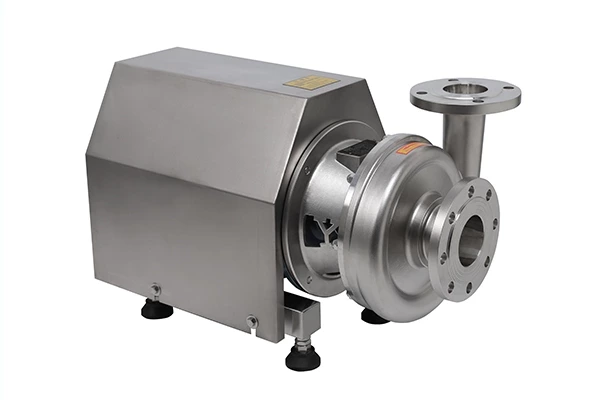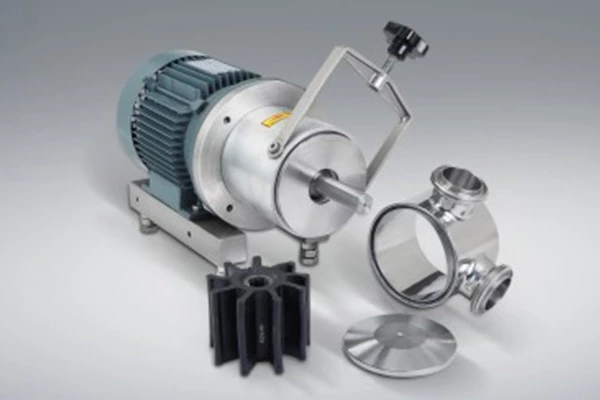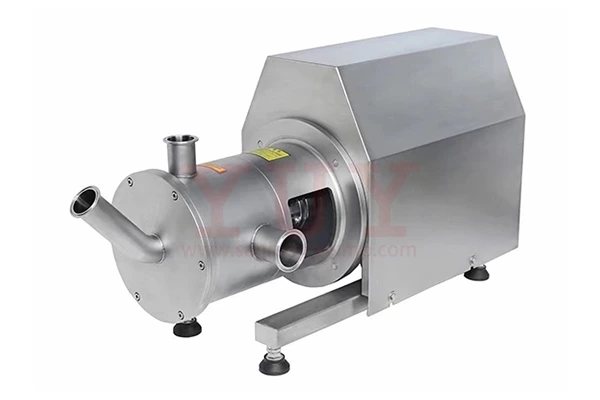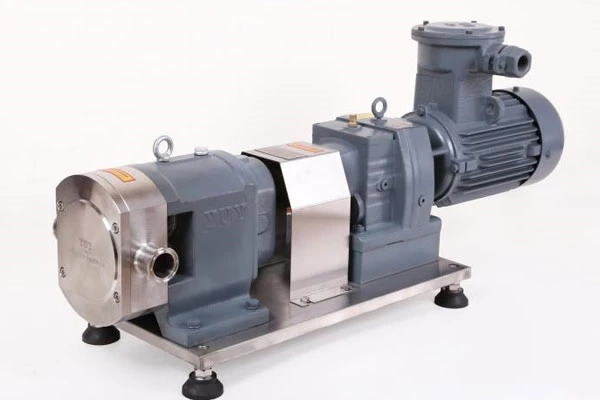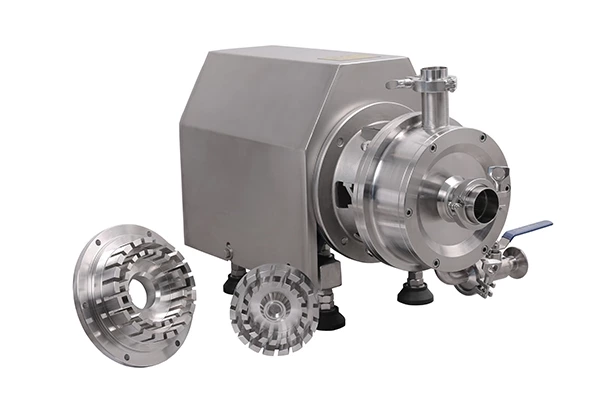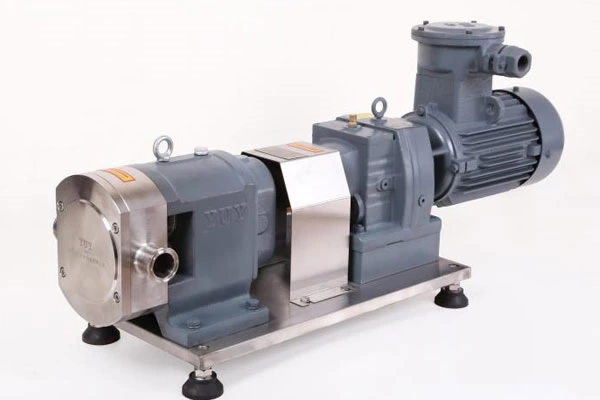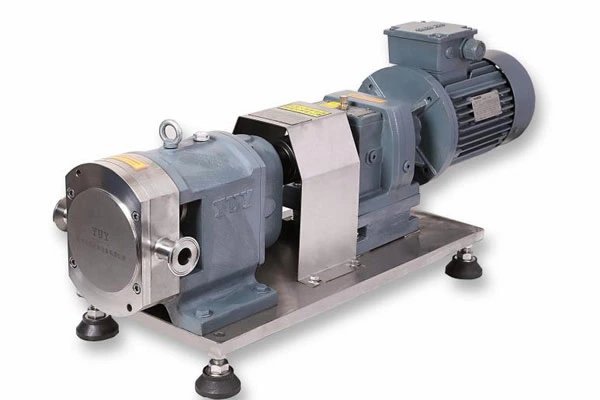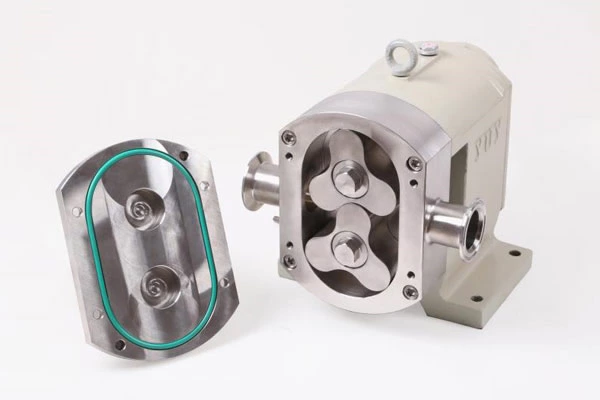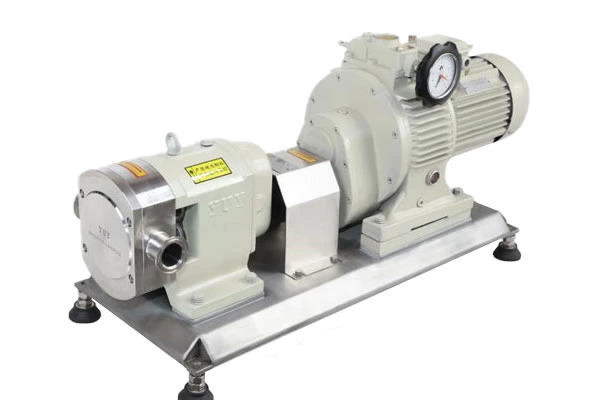150 Technical Questions And Answers About Pumps To Help You Fully Understand Pumps
21. What are the types of mechanical rotor imbalance?
Answer: Static imbalance, dynamic imbalance and mixed imbalance.
22.Sanitary Volute Pump how to measure shaft bending?
Answer: After the shaft is bent, it will cause rotor imbalance and wear of the dynamic and static parts. Put the small bearing on the V-shaped iron and the large bearing on the roller bracket. The V-shaped iron or bracket should be placed firmly. Then put the micrometer on the support, with the stem pointing to the axis, and then slowly rotate the pump shaft. If there is bending, the micrometer has a maximum and minimum reading for each turn. The difference between the two readings indicates the maximum radial runout of the shaft bending, also known as wobble. The shaft bending is half of the wobble. Generally, the radial runout of the shaft does not exceed 0.05mm in the middle and exceeds 0.02mm at both ends.
23. What are the three main causes of mechanical vibration?
Answer: 1) Structural aspects: caused by manufacturing design defects;
2) Installation aspects: mainly caused by improper assembly and maintenance;
3) Operation aspects: due to improper operation, mechanical damage or excessive wear.
24. Why is rotor misalignment an important cause of abnormal vibration of the rotor and early damage to the bearing?
Answer: Due to the influence of factors such as installation errors and rotor manufacturing, deformation after load, and changes in ambient temperature, the rotor may be misaligned. The shaft system with poor rotor alignment changes the actual working position of the rotor journal and the bearing due to the force change of the coupling, which not only changes the working state of the bearing, but also reduces the natural frequency of the rotor shaft system. Therefore, rotor misalignment is an important cause of abnormal vibration of the rotor and early damage to the bearing.
25. What is the standard for measuring and rechecking the ovality and taper of the journal?
Answer: The ovality and taper of the shaft diameter of the sliding bearing should meet the technical requirements and generally should not be greater than one thousandth of the diameter. The ovality and taper of the shaft diameter of the rolling bearing shall not exceed 0.05mm.
26. What should be paid attention to when assembling a chemical pump?
Answer: 1) Is the pump shaft bent or deformed?
2) Is the rotor balance condition in compliance with the standard?
3) The gap between the impeller and the pump casing?
4) Is the compression of the mechanical seal buffer compensation mechanism up to the requirement?
5) The concentricity of the pump rotor and the volute?
6) Are the center lines of the pump impeller flow channel and the volute flow channel aligned?
7) Adjust the gap between the bearing and the end cover?
8) Adjust the gap of the sealing part?
9) Is the assembly of the transmission system motor and the variable (increase, reducer) speed device in compliance with the standard?
10) Align the coaxiality of the coupling?
11) Is the mouth ring gap in compliance with the standard?
12) Is the tightening force of the connecting bolts of each part appropriate?
27. What is the purpose of the machine pump overhaul? What are the requirements?
Answer: Purpose: To eliminate problems that exist after long-term operation through the overhaul of the machine pump.
The requirements are as follows:
1) Eliminate and adjust the large gap caused by wear and corrosion in the pump;
2) Eliminate dirt, dirt and rust in the pump;
3) Repair or replace parts that do not meet the requirements or are defective;
4) The rotor balance test is qualified;
5) The coaxiality of the pump and the driver is checked and meets the standards;
6) The test run is qualified, the data is complete, and the process production requirements are met.
28. What is the reason for the excessive power consumption of the pump?
Answer: 1) The total head does not match the pump head;
2) The density and viscosity of the medium do not match the original design;
3) The pump shaft is inconsistent or bent with the prime mover axis;
4) There is friction between the rotating part and the fixed part;
5) The impeller ring is worn;
6) The seal or mechanical seal is improperly installed.
29. What are the reasons for rotor imbalance?
Answer: 1) Manufacturing errors: uneven material density, different axiality, non-roundness, uneven heat treatment;
2) Improper assembly: the center line of the assembled parts is not coaxial with the axis;
3) Rotor deformation: uneven wear, shaft deformation during operation and temperature.
30. What is a dynamically unbalanced rotor?
Answer: There is a rotor with equal size and opposite direction, and the unbalanced particles are combined into two force couples that are not on a straight line.
